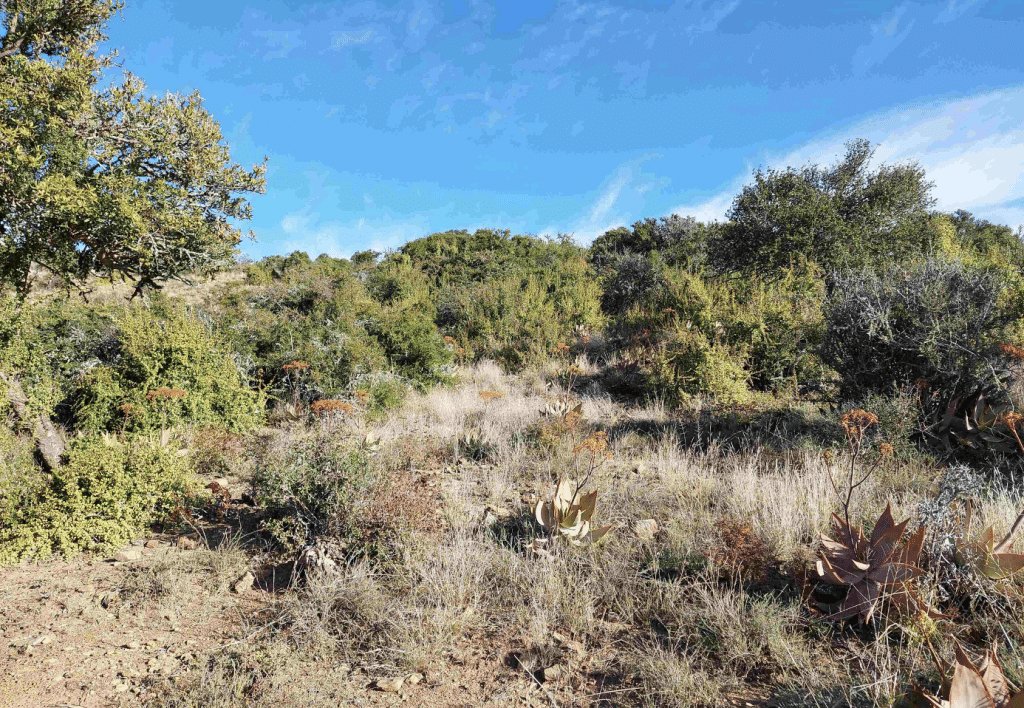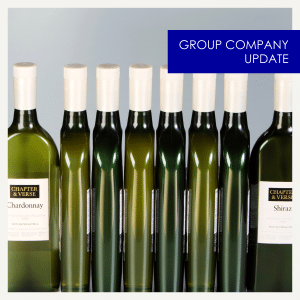Hive Ecosystems is a circular economy team within the Hive Group. The team, based in South Africa, is working to restore land previously degraded by overgrazing (livestock and game) due to unsustainable rangeland practices.
The story so far
Hive Ecosystems was established in 2021 and a year later acquired its first land – three farming properties of over 7,300 hectares in the Somerset East district, which is situated in the Albany Thicket Biome. Since September 2022, the team has set up a solar powered nursery to grow rooted plant cuttings, removed invasive plant species and extralimital game from the area, and planted more than 1,866,800 rooted spekboom cuttings in the field, covering around 660ha.
The team is using spekboom, a variety of small-leaved succulent native to South Africa, to plant in the region as it has a relatively quick growth rate, suitable for the dry environment, and is easily propagated – a feature the team is utilising to quickly fill the nursery. The aim is to propagate up to 3,000,000 rooted cuttings in the nursery per year before establishing these plants in the degraded areas.
Why land restoration is necessary
Land degradation is a global problem. It can be caused by a variety of reasons, including deforestation, natural disasters (such as forest fires and heatwaves), and agricultural farming. In this case, the land was subject to years of intensive agri-farming and overgrazing. This meant massive amounts of topsoil loss, known as erosion, as well as the soil becoming depleted of carbon, nitrogen, and other minerals. The overgrazing caused a total transformation from a once pristine dense thicket of vegetation to the current open karroid vegetation, with associated huge biodiversity loss in the landscape.
There are many long- and short-term complications that come with land degradation – including biodiversity loss and impacts on crops, lower carrying capacity for livestock and livelihoods. As well as negative implications to food, water, and economics, we desperately need more capacity for carbon storage as degraded soil releases carbon into our atmosphere, exasperating the levels of greenhouse gases and contributing to global warming.
Hive Ecosystems progress in 2024
The team has already begun restoring the area. The team of 40 workers has planted more than 1.8 million spekboom plants over the past year. Originally, the goal was to plant around 9 million cuttings in the coming years, but the plans for Hive Ecosystems have evolved.
Towards the end of 2023, the team purchased an additional parcel of farmland, adding 1,000 hectares to their existing restoration capacity. The new site is located only a few kilometres away from the existing Hive Ecosystems farms, meaning it’ll be an easy transition for the team once the current farm work is complete.
Currently, the team is working at optimum production levels, which means they’re averaging around 150 hectares (approximately 375,000 plants/month) of planted land each month. The aim is to complete the remaining 5,300 hectares of planting, including the new farm, within the next three to four years. This will work in alignment with 10 months of in field planting and a further two months of restocking the nursery with spekboom cuttings.
The team has been restocking the nursery during February 2024 and will continue this task through to March. The number of propagated plants in the nursery will be planted out in the field during South Africa’s autumn and winter, through to the end of August. During September, Hive Ecosystems will restock the nursery again with enough plants to last for in field planting until the end of January 2025. Currently, the team has the capacity to propagate 1,500,000 spekboom plants in the nursery.






